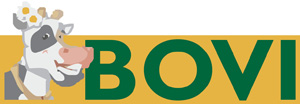
Dehorning is the process of removing or stopping the growth of the horns of livestock. Cattle, sheep and goats are dehorned for economic and safety reasons.
Horns can pose a risk to both humans, other animals, and the bearers of the horns themselves (horns are sometimes caught in fences or prevent proper feeding). The procedure is most commonly performed early in an animal's life, along with other actions such as docking and castration.
Dehorning involves destroying the horn-producing cells (corium) of the horn bud. Horn buds are removed without opening the frontal sinus. Chemical and hot-iron disbudding methods destroy the horn-producing cells, whereas physical methods of disbudding excise them.
Dehorning cattle conveys advantages.
Dehorned cattle require less feeding trough space; are easier and less dangerous to handle and transport; present a lower risk of interference from dominant animals at feeding time; pose a reduced risk of injury to udders, flanks, and eyes of other cattle; present a lower injury risk for handlers, horses, and dogs; exhibit fewer aggressive behaviors associated with individual dominance; and may incur fewer financial penalties on sale.